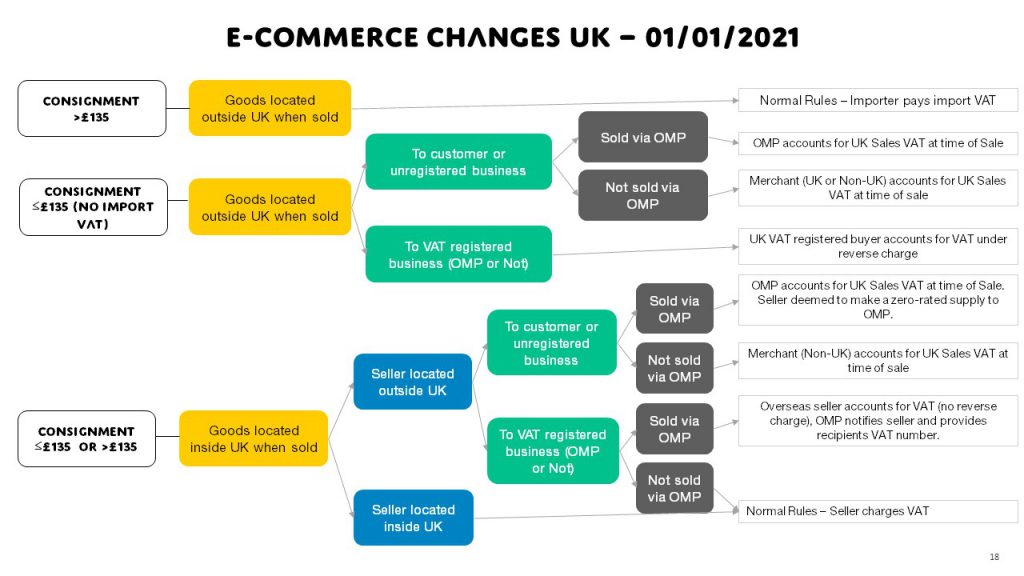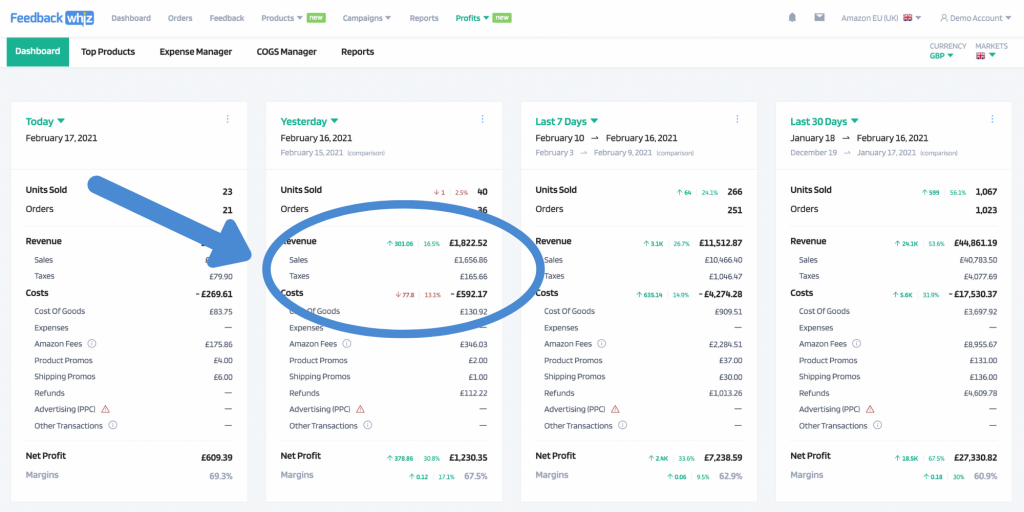
Brexit is Finally Here—What’s It to You?
Whatever your opinion of Brexit (“Britain exit” in the unlikely event you didn’t already know) it is at long last happening. January 1, 2021 marked the “final” severing of the UK from the European market. We put “final” in quotes because there are still some details to be ironed out, such as decisions about data sharing and financial services.
What’s certain is there is now a customs border between the United Kingdom (UK) and the European Union (EU). And that Amazon sellers need to adjust to it.
How exactly does Brexit affect Amazon sellers?
We’d be doing you a disservice if we didn’t share Amazon’s guidelines for sellers. You can read their guidelines here.
For the purposes of this post, we’ll break down the key factors of concern for:
- What is Brexit (and why does it matter)?
- How Brexit affects Amazon sellers.
- What Amazon sellers can do next.
What is Brexit (and why does it matter)?
Britain has been debating whether to remain in the EU almost from the time it joined. The idea for Brexit actually originated in 2013. A 2016 referendum asked a simple question, “Remain or Leave;” 52 percent of voters chose to leave.
The basic idea of the EU is to allow 28 countries, which used to include the UK, to function in many respects as a single country, with a common currency and governing body concerning trade, transportation, and environmental policies. With the finalization of Brexit, the UK is now a separate economic entity. That could have resulted in the imposition of tariffs and trade quotas. However, the UK and EU struck a free-trade agreement this past December. As pointed out by Will Kenton writing in Investopedia, “While the deal allows tariff- and quota-free trade, U.K.-EU trade still faces customs checks, meaning commerce is not as smooth as when the U.K. was a member of the EU.”

Source: ICAEW
How will Brexit affect Amazon sellers?
Amazon’s UK warehouse operations are splitting from the European Fulfillment Union, so you won’t be able to sell goods stored in UK FBA centers to Europe. Nor can you send inventory to fulfillment centers in the UK for Amazon to distribute for storage in the EU. Stock in European Amazon warehouses can still be sent to other countries in Europe, but can’t be sent back to the UK. To get the “Shipped by Amazon” label, your products must be stored in and shipped from a European marketplace.
All of which means you might want to stock on both sides of the border. If you do, you’ll need to consider:
- Vat Costs
- Brand Registry
- Customs & Clearance
Let’s break each of these down.
VAT Costs
Amazon sellers now need a separate VAT registry in the UK and a European VAT to sell in other EU countries. If you want to move goods between the UK and EU and store them locally, you’ll now need a VAT number for the country where they are stored. In addition, you’ll need to obtain separate EORI (Economic Operators Registration and ID) UK and EU numbers to move bulk inventory in or out of the UK and EU.
Amazon will automatically collect VAT on any sales of goods from all Amazon storefronts that are delivered from inventory stored :
- outside the UK with a shipment value of up to £135.
- in the UK, irrespective of value, where you, the selling partner, are not established in the UK.
The UK VAT automatically calculated and collected from the customer at checkout is remitted directly to the UK Tax Authorities. Consequently, sellers are required to remit these sales to the tax authorities and no longer receive the VAT amount in their disbursements.
Note that, according to the BBC News, buyers in the UK for anything over £135 have to pay the VAT. For items over £135 (except alcohol, tobacco and perfume, which are not included in the £135 allowance) buyers may be charged customs duty of up to 25 percent if all or a large part of the product is made outside the EU.
Sellers that took advantage of the previous VAT exemption on sales of goods under £15 no longer receive that exemption under the new UK VAT laws. Consequently, goods that ship to and from the UK should have VAT included in Amazon list prices.
For most Amazon sellers, this new system is going to be an improvement. It’s going to mean less work. But while VAT changes go into effect automatically, Amazon sellers are still advised to read Amazon’s report on the VAT changes.
With the FeedbackWhiz Profits and Accounting tool, you can easily label VAT costs as taxes to properly track and forecast your fees. More on that further down.

Brexit and Brand Registry
Registering your brands helps protect your intellectual property. It’s also a great tool to boost sales. Features such as A+ content, brand storefront, Amazon Posts and virtual posts can help contribute to brand reputation and sales growth.
Brexit makes Brand Registry a little more complicated.
You now need to register brands separately in the UK and EU. Brands currently registered with only an EU trademark are protected in the UK Brand Registry. However, EU brands cannot report potential infringements in the Amazon UK store. As a result, you still need to register brand trademarks in both UK and EU Brand Registries.
To update your trademarks, log into your Brand Registry account, then follow the instructions provided under Contact Brand Support –> Add a Trademark.
Read: 8 ways to use Amazon Brand Registry to increase sales.
Customs and Clearance for Amazon Sellers
Because Brexit means the UK is a separate country from EU countries, all imports and exports are now subject to customs and clearance requirements. You can complete these declaration forms or hire a customs agent to do it for you.
In addition, under Brexit you cannot send inventory from UK fulfillment centers to the EU for storage. Nor can UK FBA centers ship orders in Europe. Stocks in an Amazon warehouse in the EU can be distributed to other EU warehouses, but can’t be sent back to the UK. Third party seller products are no longer eligible for 2-day Prime shipping, nor will they be visible to customers in the EU.
What can Amazon sellers do next?
As you’ve probably guessed, life post-Brexit for Amazon sellers gets a little more complicated. As Keir Thomas-Bryant points out, “There’s no doubt that preparing a business for a future in a post-Brexit world continues to be difficult due to ongoing uncertainty.”
What is certain for Amazon sellers is that in addition to adhering to the new tax, brand registry and customs regulations to do business in both UK and EU markets, you’ll need some tools to better segment product data and sales across these marketplaces. And given the extra time and expense of selling to two distinct marketplaces, you need to think of ways to lower your Amazon seller fees.
Dive deeper into your UK sales and fees data
Amazon has built-in analytics that can help you segment your business data between UK and EU markets. But it can be difficult to read and even completely understand. Moreover, it lacks several critical indicators, such as costs of goods.
What you need is an Amazon profit and accounting tool with a customizable dashboard that allows you to properly distinguish all your costs of doing business in multiple marketplaces. A few simple clicks allow you to drill down through layers of data and detect critical indications of how your business is performing with easy-to-understand graphs and charts.
Key features of a profits and accounting software tool allow you to compare sales metrics and analyze sales data across UK and EU international marketplaces to:
- Track profits and losses on all your Amazon product listings across marketplaces.
- Identify profitable aspects of your business, and which aspects need improvement
- Measure performance of Amazon listings quickly, easily and intuitively
- Easily break down sales, taxes, refunds and other seller fees including VAT costs
- Categorize profits and losses and view key metrics
- Customize and track all revenues and expenses
This same tool can also help lower your Amazon seller fees, like VAT costs. The Profits and Accounting tool empowers you to label VAT costs as taxes, so you can easily analyze and forecast your VAT costs. And by analyzing your most profitable and least profitable products, you can get a better idea of how fees are affecting your profits and make adjustments where necessary to try and lower Amazon seller fees.
Interested in learning more about how a profit and accounting tool can help your business grow in both UK and EU marketplaces? Give it a try for free today! Sign up for a free 30 day trial of the Profits and Accounting tool, and you’ll also be able to use the full suite of FeedbackWhiz’s powerful Amazon selling tools.

0 Comments